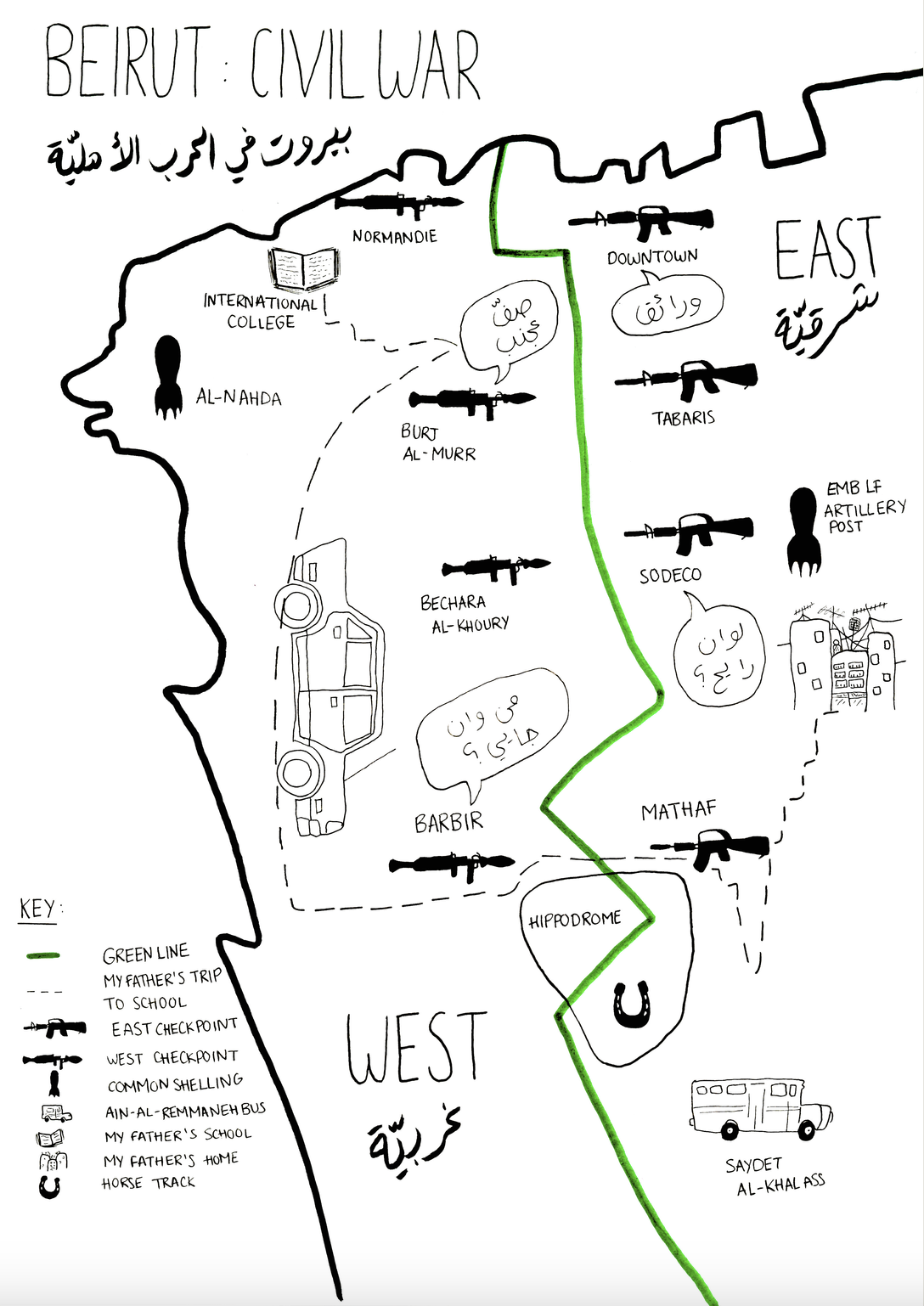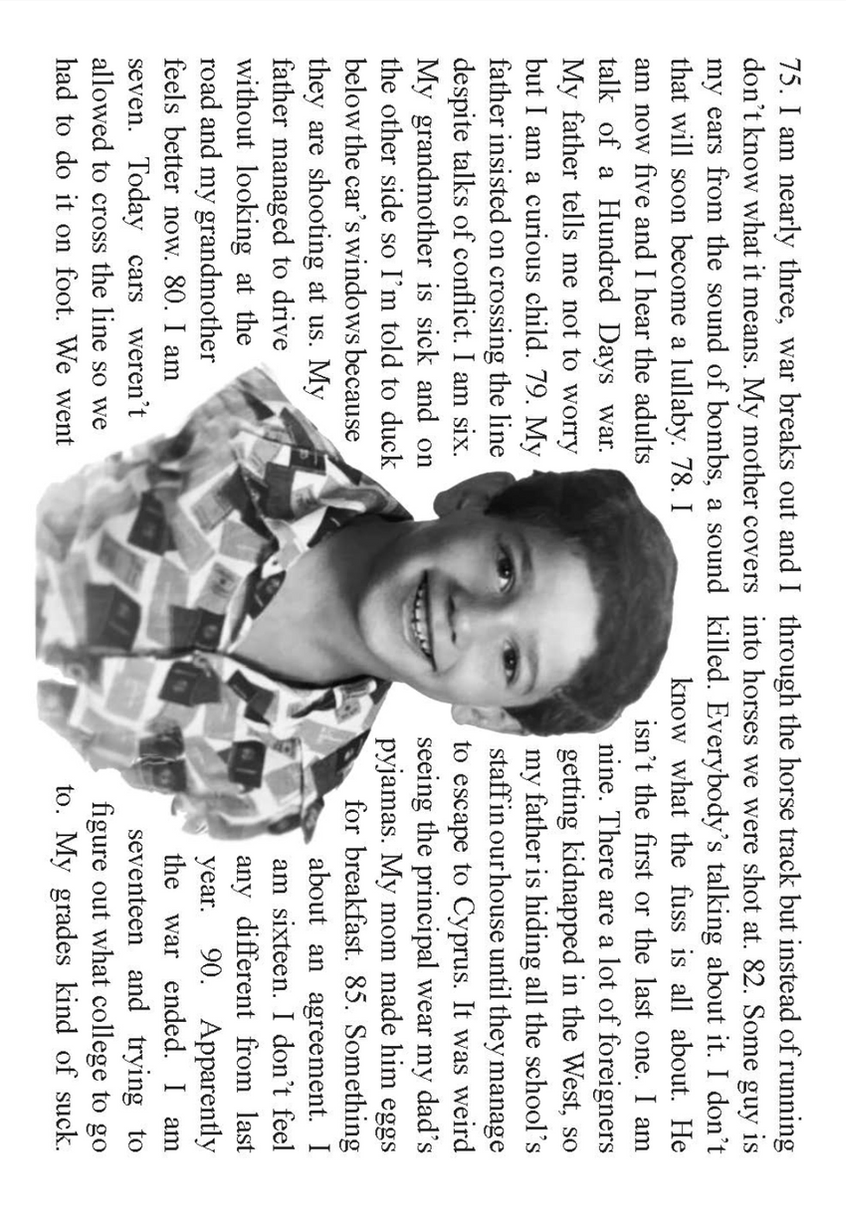Are We There Yet / "War Breaks Out And I Don't Know What It Means"
Drawing territories of identity.
November 2022
Illustration/Mixed Media
Are We There Yet – Part 1
At first, I chose to depict an element that has followed me wherever I went, back in my home country Lebanon. It is very common to run into these types of trucks, especially on big highways. It is very typical of Arab countries and especially Lebanon, decorating the truck with sayings and symbolism to keep the evil eye away. Going up to the mountain house, I remember fixating on the intricate details of the painting and calligraphy that adorned the back of the trucks and being hypnotized by them – punctuating the time passing with an “are we there yet?” to my parents who would not engage. There is a lot of mystery surrounding the origins of this practice, and that is a recurring theme in Lebanese history, traditions and cultures. Developing on this subject of lack of evidence, I thought about the Lebanese civil war and the absence of accurate information about it. Through storytelling, the stories of war come up in our daily lives but only orally. Discussing with my father, mother, grandfather and grandmother, I collected information on the topic, trusting their memory, to try and draw a picture of my home country during the civil war.
“War breaks out and I don’t know what it means” – Part 2![]()
This project is based on the Lebanese civil war (1975-1990), tackling subjects of retrospection, nostalgia and war trauma through a child’s lens. The first piece of my project is a map of Beirut during the civil war years, as it was divided in half by the “green line”: West Beirut and East Beirut. The West part was occupied by Muslim militias, political parties and Lebanese Army. The East was occupied by Christian militias, political parties and Lebanese Army. To go from West to East Beirut (and vice versa), you must pass from one of 5 checkpoints that are situated on each side of the green line, in Beirut and its suburbs. Between each checkpoint would be a no man’s land passage (ma3bar) connecting West to East, and it would be a very dangerous area, as you risk getting shot, kidnapped, and stolen from. They would ask where you come from, where are you going, why are you going there, and for identification. As one side is Muslim and the other Christian, the armed men of the checkpoints would sometimes arbitrarily kill innocent civilians on religious basis. This map depicts the green line and checkpoint, and my father’s trip to school as he grew up in the war. His house was on the East side and school (where his parents worked) was on the West side. It was a dangerous trip each time but they had no other choice but to face the danger that crossing the line represented.
The second piece of my project is a picture of my father as a child accompanied by a text piece I wrote based on war-related childhood stories he told me about. I attempted to adopt a childlike tone throughout to encapsulate the innocence of a child that fights to preserve it despite the reality of war. By punctuating the writing with years and my father’s age, I created a written timeline of the war. It is not traditional as it is far from precise and clear for people who do not know about the history of Lebanon, and that is to convey the fog that surrounds this subject, as to this day, there is no written history or accurate and objective recollection of the events that occurred during the Lebanese civil war.
The second piece of my project is a picture of my father as a child accompanied by a text piece I wrote based on war-related childhood stories he told me about. I attempted to adopt a childlike tone throughout to encapsulate the innocence of a child that fights to preserve it despite the reality of war. By punctuating the writing with years and my father’s age, I created a written timeline of the war. It is not traditional as it is far from precise and clear for people who do not know about the history of Lebanon, and that is to convey the fog that surrounds this subject, as to this day, there is no written history or accurate and objective recollection of the events that occurred during the Lebanese civil war.



